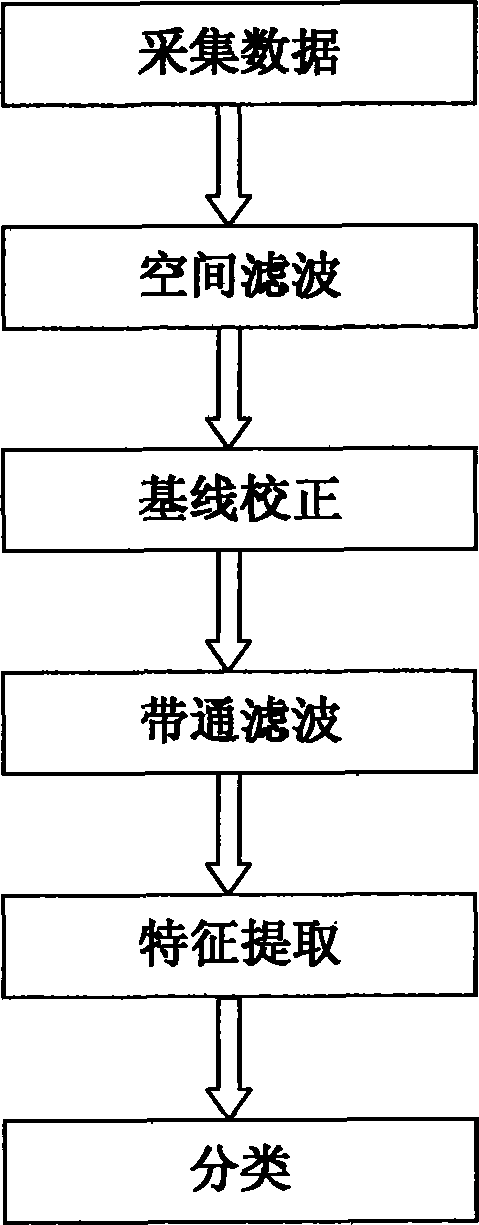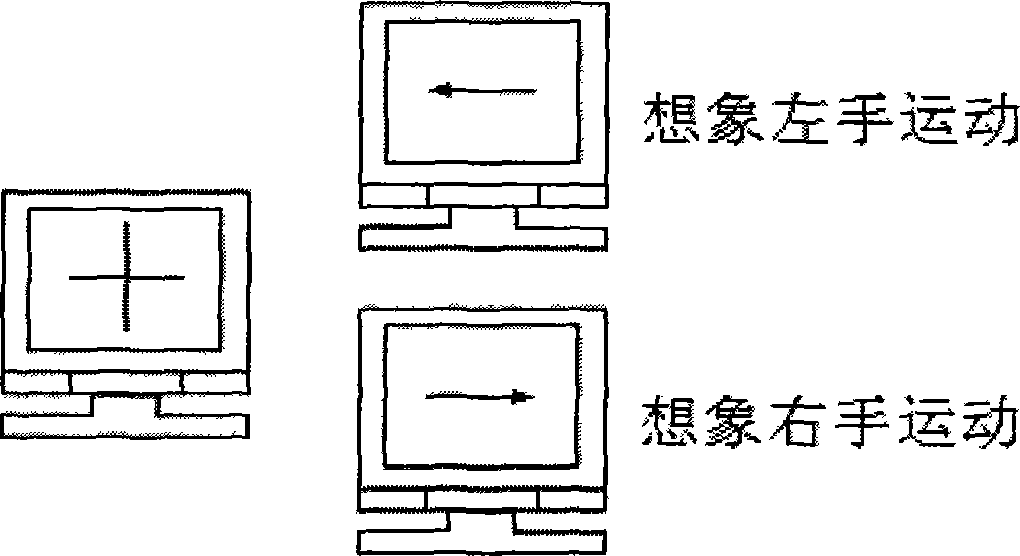Method for extracting motor imagery electroencephalogram signal feature based on non-linear dynamics
A nonlinear dynamics and EEG technology, applied in the field of information, can solve the problems of lack of data acquisition environment, low accuracy of motor imagery EEG signals, unfavorable promotion, etc. The effect of accuracy and stable classification accuracy
- Summary
- Abstract
- Description
- Claims
- Application Information
AI Technical Summary
Problems solved by technology
Method used
Image
Examples
Embodiment Construction
[0025] Attached below figure 1 The present invention is further described.
[0026] Step 1, collect data:
[0027] The EEG signal acquisition system collects EEG signals imagining unilateral finger movement through the electrode cap worn by the subject. The EEG signal is obtained by an electrode cap worn on the subject's head, amplified by an EEG amplifier and converted by an analog / digital converter, input to a computer, stored and displayed in the form of signal voltage amplitude.
[0028] The subject wears an electrode cap, sits on a chair and looks at the monitor about 1m away from him. The sampling frequency of the EEG signal acquisition system is 250Hz, the test electrodes are C3 and C4 respectively, and the fluctuation range of the EEG signal is ±100μV.
[0029] In the data collection step of the present invention, it is necessary to give the subject motor imagery prompts, and for specific prompt types, refer to figure 2 . exist figure 2 There are three kinds of...
PUM
 Login to View More
Login to View More Abstract
Description
Claims
Application Information
 Login to View More
Login to View More - R&D
- Intellectual Property
- Life Sciences
- Materials
- Tech Scout
- Unparalleled Data Quality
- Higher Quality Content
- 60% Fewer Hallucinations
Browse by: Latest US Patents, China's latest patents, Technical Efficacy Thesaurus, Application Domain, Technology Topic, Popular Technical Reports.
© 2025 PatSnap. All rights reserved.Legal|Privacy policy|Modern Slavery Act Transparency Statement|Sitemap|About US| Contact US: help@patsnap.com



